Top 15 Foods That Improve Eyesight
Seeing is something you can easily take for granted. Many sports, crafts,
workplaces, and human interactions require vision, and you have probably become
so well practiced at not just those skills but at taking cues from the visual
world that you might never give a conscious thought to seeing. That can change,
though, if you develop issues with your vision. Vision difficulties can impact every sphere
of your life with their direct limitations on your abilities, and can lessen
your quality of life with their indirect impacts on your health. Poor vision can
lead to headaches and neck aches from straining to focus, as well as an increase
in household accidents when important environmental details are missed. Many
people naturally experience deterioration in eyesight as they age, and while it’s not
possible to reverse detrimental effects without surgery, there may be very
simple and natural ways to care for your vision at home and prevent the onset of
many troubles.

Food is one such aspect to work on maintaining your quality of vision, as your nutrition lays the
foundation for the rest of your health. Read on to find out what foods you
should be eating to protect your eyes.
15) Whole Grains
You may have already heard that whole grains, like whole wheat bread and pasta,
are better for the waistline than their refined cousins, but it’s also true they
serve some limited functions for eye health and vision. While flour processing often leaches these
nutrients out, sources of whole grain contain zinc and selenium; two
important minerals for protecting your vision. Zinc in particular is an
important catalytic element found in high levels in the retina, and allows
numerous chemical reactions to take place. Zinc deficiency is a common issue
among adults, and can make the body weaker to stress and the effects of aging.
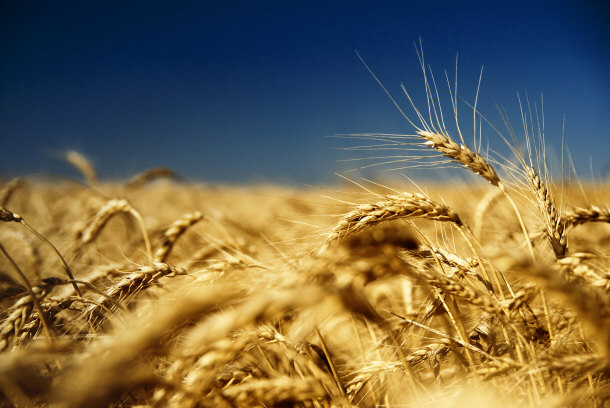
Additionally, whole grain diets can be good for eyesight because they are
part of eating some low carb diets. In some studies, high carb diets have been
linked to advancing age-related macular degeneration. A study published in the
American Journal of Clinical Nutrition noted that a diet with a high glycemic
index — one laden with sugary, processed carbohydrates — could be as bad for
patients with advanced macular degeneration as it is for diabetics. Both
of these patients suffer from a blood chemical imbalance that disrupts delicate systems in the body, leading to visible tissue damage.
14) Citrus Fruits
Citrus fruits are high in vitamin C, a vitamin that affects many bodily systems. The
most well-known effect is on the immune system, where vitamin C can give a boost
to your body in fighting off microscopic invaders. Vitamin C can also boost
capillary circulation, healthy cartilage, and teeth and gums as well. Now, it
appears vitamin C is an important nutrient for the eye, where it protects visual
acuity, prevents cataract formation and growth, and slows down damage done by
advanced macular degeneration. Vitamin C is so important the American Optometric
Association discusses its value on their website, and recommends you consume the
recommended daily value prescribed for good health.
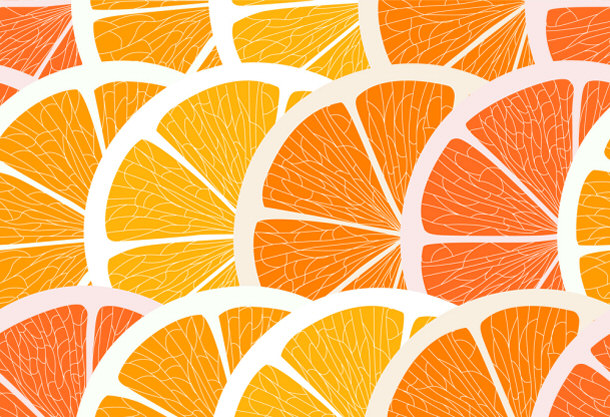
While you can — and should — get your vitamin C in a multivitamin supplement,
vitamin C is a water soluble vitamin that is easily flushed out of the body. There
is no side effect to taking more, and while it is still under research, it
appears that the more vitamin C consumed, the stronger an effect it has.
Grapefruit, oranges, and many other citrus fruits are loaded with this vitamin
and other important nutrients, and so should become a staple of your diet if you
want to protect your eyes.
13) Spinach
This dark leafy green is an underrated wonder food. Popeye may vouch for it,
but it seems a lot of people still over look this wonderful source of calcium,
vitamin A, vitamin B12, and vitamin C. Additionally, spinach contains lutein, a
nutrient slowly coming to the spotlight for its effects on vision. It may take
as little as half a cup of spinach a day to reap the benefits from these leafy
greens.
Strawberry and Spinach Salad
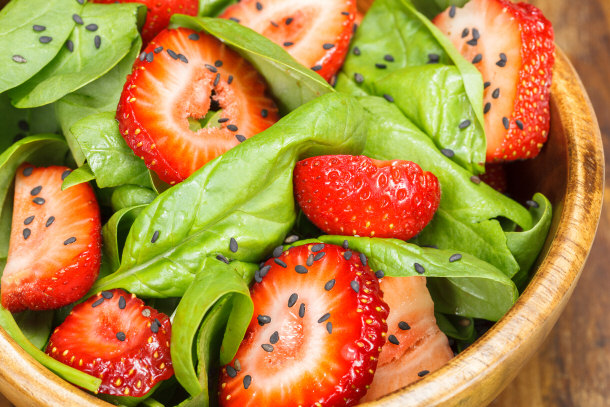
It’s okay if cooked spinach isn’t your thing. Overcooking destroys too many
of these precious nutrients anyway. Spinach is excellent in salads, either as an
additional green or as a substitute for lettuce. Additionally, you can blend one
serving of raw spinach up in your smoothie with rich berries and strong citrus,
and gain a green boost in a way that hides the flavor under sweeter tasting
foods. Still not feeling spinach? Also look into kale, broccoli, and kelp to
find equivalent sources for the same nutrients.
12) Beans and Legumes
Beans are another good source of zinc, and also contain a couple different carotenoids similar to lutein. Some beans are also good sources of vitamin A and
vitamin E. You probably already know this humble vegetable packs a serious protein
punch, a food that can easily provide the energy you need to keep your eyes fuelled and
ready to roll.
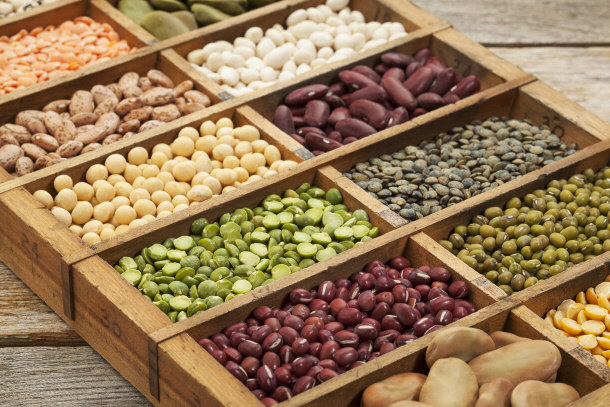
Like beans, legumes also contain many carotenoids as well as high amounts of
protein. Peas are a good source of additional vitamins, and peanuts are a good source
of vitamin E. Vitamin E is most known for its effect on skin, but that’s not the
only system it can improve the health of. Vitamin E is an important aid in
cellular repair and restoration, and so can help eyes repair damaged spots,
prevent cataracts, and slow down degeneration from aging.
11) Nuts
Protein is good for all your systems, and nuts are a great source of lean
protein. They also contain nutritious fatty oils like vitamin E and omega-3
fatty acids. Vitamin E once again contains a host of restoring capacity for the
body to utilize, and can also help protect the eye's most sensitive part; the
retina. Fatty acids often make health news in terms of brain boosting abilities,
but fatty acids can also have a fantastic effect on your delicate eyes. Human
eyes surprisingly have a great need for fats to maintain their overall health.
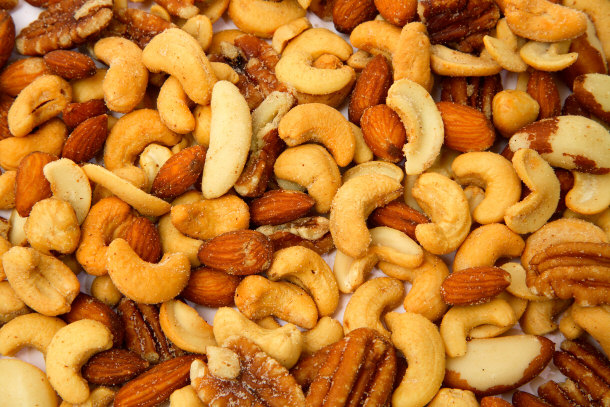
Nuts provide a quick energy boost as a snack, which keeps blood sugar levels
from crashing, causing the body to divert energy reserves and function from the
eyes. Besides its other effects, low blood sugar can cause spots in the visual
field, symptoms of eye strain, and a ghosting phenomenon — sometimes called
“seeing double.” Reaching extremes of starvation can even cause hallucinations,
which, while that’s on your visual processing centers, still affects your vision
in terms of what you see. While these effects might not occur under the
circumstances of your normal life, where the kitchen and vending machines are
never far away, the fact remains that any foods that can help you stay full and
satisfied will ensure you never end up testing your limits, whether it be at home or abroad.
10) Seafood
Seafood also contains omega-3 fatty acids as well as zinc. In fact, oysters
in particularly have some of the highest levels of zinc in any food stuff — 76.3
milligrams per serving — as the American Optometric Association's Age-Related
Eye Disease Study discovered. That’s only six oysters, if you’re keeping a close
count.
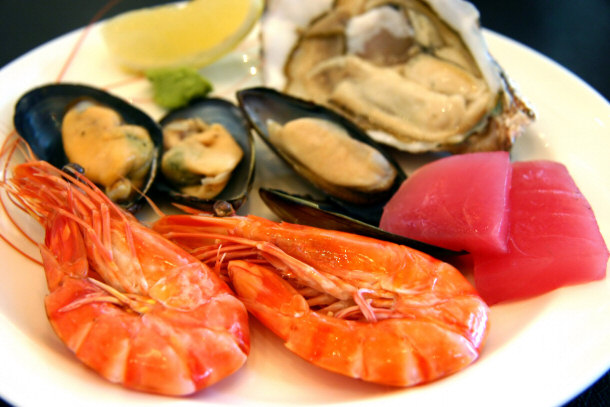
Among the many catalytic activities performed using zinc ions, one of the
most important is the process whereby vitamin A produces melanin for the retina.
Melanin is a chemical compound that acts like a natural sunblock for us,
attempting to repel damaging rays. You may know it most in terms of skin color,
as it is what makes up the pigment in dark skinned individuals, freckles, and
your summer tan. While pale complexions developing a sudden hue from melanin
points to skin damage, melanin is produced in the eyes as a preventative measure
from sun damage to the lens and the retina — a very delicate visual disk whose
deterioration leads to blindness.
9) Bell Peppers
These peppers are also packed with vitamin C like some of the other foods on
this list. In addition, you can find vitamin E, betacarotene, vitamin B6,
capsaicin, antioxidants, and many other enzymatic phtyochemicals in bell
peppers. Red bell peppers contain the greatest amounts of many of these
nutrients, though any variety is worth giving a try. When you roast them lightly
at low heat, these peppers have an almost sweet flavor to them mixed in with the
spiciness, making them a favorite vegetable in stir-fry dishes.
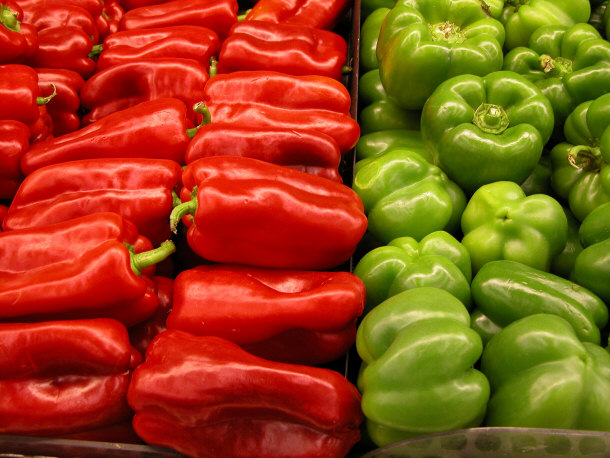
Bell peppers are also exceptionally low in calories, making them a good
choice if you’re trying to watch your weight. Finally, sulfur compounds in the
peppers are also catalytically important to your bodily systems like vision, as
well as serving as a protective measure against certain cancers.
8) Avocado
You may know avocados for their high fat content, but this vegetable also
contains folate, lutein, zeaxanthin and vitamin E — among other nutrients.
Zeaxanthin is another carotenoid like lutein that is responsible for aiding
vitamin A in running the eye’s visual functions. The fat in avocados is
monosaturated, which is the healthiest variety for your body that plays a key role
in metabolism and cellular processing.
Avocado Tree
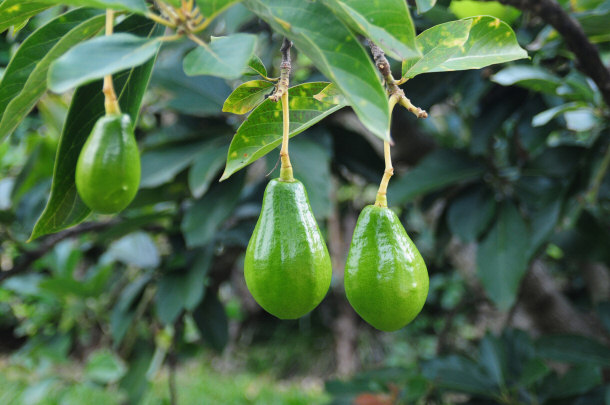
The oleic acid in avocados is also important in lowering bad cholesterol and
promoting healthy cholesterol, which can improve the health of arteries and
prevent strokes as well as heart attacks. Along those lines, the folate and high
amounts of potassium in these vegetables aid heart health, as both nutrients are
vital to maintaining heart regularity and strength. The antioxidants found in
avocado flesh help prevent cancer, and many of the other nutrients available
appear to aid in the absorption of nutrients found in other foods eaten with
this one — particularly the carotenoids needed to protect vision and promote
optimal function of the eyes.
7) Garlic
Garlic, onions, and shallots are all distantly related plants that share many
important health benefits. Garlic has been linked to cancer prevention,
cardiovascular health, immune protection, and metabolism just to name a few. The
sulfur compounds in garlic are the largest contributors to the herb’s health
abilities. Garlic regulates blood sugar levels and improves circulation, both of
which are important metabolic factors for maintaining eye function. Garlic also has
anti-inflammatory properties, a help to any tired tissue, and has anti-microbial
benefits. The latter is particularly important to sensitive areas like the eye,
where infections are highly communicable and can lead to detrimental effects
that include temporary or permanent loss of vision.

The compound allicin in garlic is great for lowering blood pressure, which is also
good for your eyes. Hypertension can cause a variety of eye disorders, and lead
to such symptoms as bleeding at the back of the eye, spots on the retina, and
swelling of many parts of the eye.
6) Eggs
Eggs have a strange, wavering reputation with the public, and go through fads
of being in and out of diets. At one point eggs were good for you, then it was
decided they were bad, and it seems the jury is still out on how healthy
consuming eggs is for the body. Cholesterol has been a big concern regarding
eggs — as with all animal products. The key here is to understand the difference
between cooked saturated fat and the healthy lipids that are present in eggs
when they are consumed in their raw state. Eggs are high in
protein, zinc, choline, lutein, zeaxanthin, and sulfur. Egg whites are the
easiest to digest amino acids among your foodstuffs, and many of an egg’s
proteins are ideal for strengthening the structure of the eye. As stated
elsewhere in the list, zinc, sulfur, and the carotenoids all work together to
aid the catabolic processes need to keep the eye running smoothly and stay
well-protected.

Choline isn’t directly important for eye health, but it is increasingly
linked to optimum brain function, particularly in fetal development. Even in
adulthood, the nutrient appears to be important in helping the brain form neural
connections and process information. Choline may work together with omega-3
fatty acids to strengthen neural connections all over the body as well. Since
vision is nothing but processed light waves made into sensible, recognizable
patterns by the network of the brain receiving the eye’s input, choline can
still play a crucial role in how well you see. So, in moderation, eggs are
definitely a superfood you should be adding to your pantry if you’re serious
about the health of your eyes. Also eating the egg yolks uncooked (or
runny) is a healthier than cooking them. Just make sure the eggs are
healthy from the start, which means organic and free range.
5) Dark Chocolate
You can never have too many excuses to eat more chocolate, especially dark
chocolate. In small
amounts, this rich food has a host of health benefits that include many
antioxidant powers and its ability to promote circulation. Better blood flow and
healthy blood vessels are essential to keep your eyes in tip top shape. Eyes have a lot of
work to do just to give you one fleeting nanosecond worth of a view of the
world. Most of what they do is involved with complex chemical reactions that capture
photons, and reassemble them into basic structures that the brain can read as
patterns.

All of this is powered by the flow of nutrients and the removal of
by-products that has to remain in constant function to keep from interrupting
our eyesight. High blood pressure, low blood pressure, poor circulation, and
oxygen starved blood can all hinder this molecular trade, and over time, an
unfit cardiovascular system will contribute to cellular degeneration, cell
death, and decline in abilities of the affected system. Poor circulation is the
cause behind neuropathy, which the primary symptoms are numbness and tingling,
that can eventually lead to necrosis of ocular tissue at both minor and major levels.
4) Apricots
This humble little stone fruit deserves more recognition for the nutrient
powerhouse it is. Containing vitamin C, lycopene, tryptophan, potassium, and
betacarotene, the smooth, sweet flesh of a golden apricot is a good nutritional
investment for improving your overall health. Apricots are a great way to
maintain as well as enhance the function of your eyes. The American Optometric
Association recommends getting a full three servings of fruit a day to protect
against diseases of the eye that lead to vision loss, and just one juicy apricot
already puts you a third of
the way there.
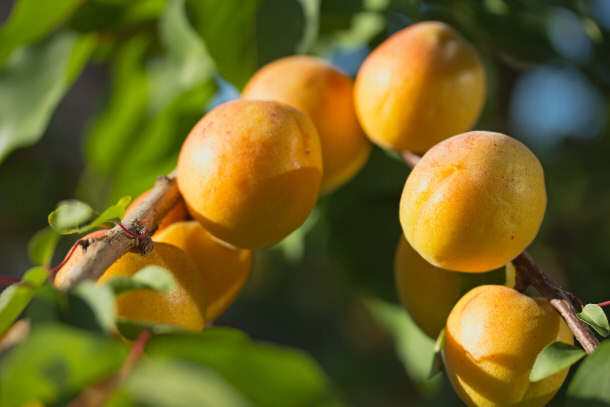
Like many foods, buying locally grown produce is the best way to maximize the
amount of
nutrients you will receive when you eat it. Local fruits are more likely to be fully ripened, have fresher flesh
that is less likely to have begun breaking down, and on a grander scale, reduce
your carbon footprint by requiring less fossil fuels because the food did not
have to travel across continents to get to you. In the U.S., apricot season is
roughly from May to August, which you can only assume coincides perfectly with
smoothie season. Most commercial apricots are grown in California, but while
that might not be what you think of as local, since many winter apricots come
from as far away as New Zealand. But in a country like the U.S. where now almost
everything seems to be outsourced, that doesn’t sound all that bad.
3) Bilberries
Historically, British pilots once used these berries to improve their night
vision when flying on dangerous military missions. Today, bilberries are still
considered important for your ocular health. The primary compound in bilberries
that aids eyes is anthocyanosides, which is nourishing to eye tissues.
Anthocyanosides are potent antioxidants that make up the dark pigments of many
fruits and berries. While not currently supported by many major studies, there
is still a strong anecdotal association with these compounds and direct
improvements of vision — particularly night vision.
Bog Northern Bilberry
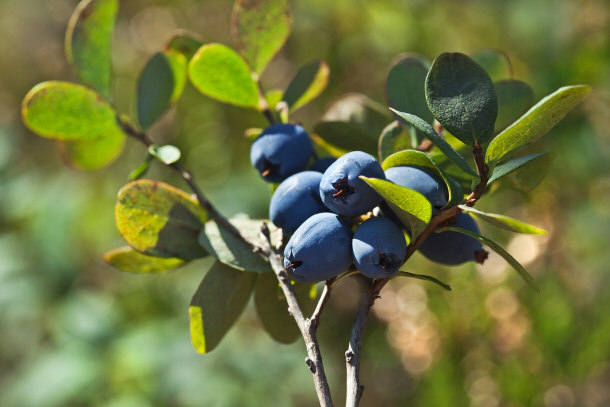
Bilberries are native to North America, and have been used for many years in
jams, jellies, and baked goods — particularly as a substitute for black currant.
Bilberries are related to the blueberry, which contains many of the same
compounds, as well as a similar dose of vitamin C. Bilberries are also known to protect
the retina, and in some cases have been noted as improving atherosclerosis, or
plaque build-up in blood vessels. Its effects on the circulatory system are
prized by holistic medicine practitioners for treating varicose veins in a nonsurgical, all-natural way as well. Bilberries can be eaten raw, drunk in a
juice, or consumed cooked or baked in other foods. If you don’t have a decent
supply of fresh bilberries close by and you don’t fancy growing them yourself,
there are also bilberry extracts, tinctures, and supplements available at most
health food stores. The only drawback to supplementing bilberries in your diet
is that an overdose of the concentrated bilberry, in some cases, can cause an upset stomach. Possible medical interactions have also not been explored, as
bilberries are considered a food and not a medicinal compound. If you’re serious
about trying these to enhance the overall functionality of your eyes, it’s best to discuss it with a
ophthalmologist.
2) Sweet Potatoes
These tubers are nutritiously dense, containing zinc, iron, betacarotene,
vitamin D, vitamin B6, vitamin C, and magnesium. They are also fibrous and
filling, and though a little fattening when smothered and glazed at your holiday
table, can be a calorically economical choice when baked with some light seasoning.
Sweet potatoes “fries,” or julienned slices of sweet potato baked crispy in the
oven with herbs or a pinch of cinnamon sugar are one of the trendiest ways to
consume this superfood. Sweet potatoes have a sweet, rich, creamy taste to them,
never leaving you feeling guilty; even if you consume this food daily.

In addition to the benefits of the nutrients already discussed, iron promotes
good cell functioning and oxygen transport throughout the body. Associated with heme, iron is integral in oxygenating blood, providing eyes with the necessary
gas that regulates so many respiratory functions all the way down to the molecular level.
Magnesium is also an important mineral for nearly all these systems, and is
essential to good catabolic function as well. It is also a majorly overlooked
ingredient by people trying to live a healthy lifestyle, so move ahead of the
crowd by consuming foods rich in it, such as sweet potatoes.
1) Carrots
You may never refer to carrots as
‘Rabbit food” after you see the benefits
carrots can provide. Carrots come in a much wider variety than you might
realize, too. Not just orange, there are also green, purple, white and red
carrots. Orange and yellow carrots — the most commonly known — are the best
protectors against cardiovascular disease, and have a very high level of betacarotene.
Some purple and red varieties are also strong in this area and contain the same
antioxidant compounds discussed so positively with bilberries and blueberries.
While it’s popular to tout other foods less associated with eyesight better than carrots, carrots are just as nutritiously dense, and
have the added benefit of being easily accessible in many food markets. Carrots
are also relatively easy to grow for new gardeners. So if you’re looking to take
a hand in raising your own food supply, you should take a look at these
vegetables.
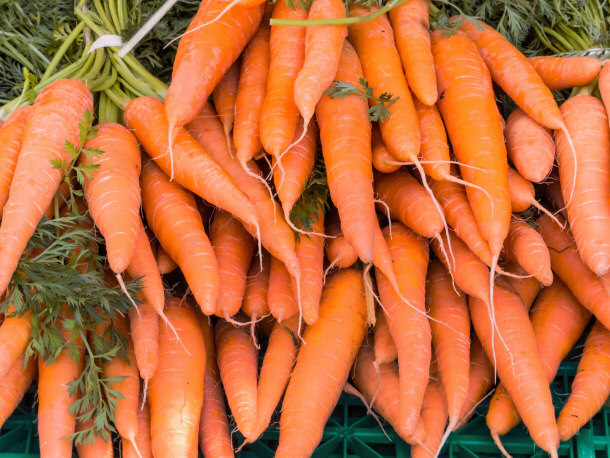
Carrots can be enjoyed fresh and raw — particularly in their growing seasons
of summer and fall — or lightly steamed, and can be found in salads, on
sandwiches, in stews, and as a stand-alone side item. You may even consume some
in of all places baked goods, like in a carrot cake. It’s important to note,
that carrots should be cooked carefully and never over boiled in order to preserve their
nutritional value. The betacarotene in many of these vegetables like carrots is
a precursor to vitamin A, which the retina transforms into rhodopsin. Rhodopsin
makes up the rods in your eyes that give you lowlight as well as night vision. Carrots
also contain phytochemicals that are good for the skin, which have
anti-septic properties. Additionally, a natural pesticide produced by carrot
roots called falcarinol is currently in research for its possible anti-cancer
properties.
Final Thoughts
It might be more difficult to truly
improve or enhance eyesight, but due to
the fact that some level of degeneration is inevitable, just stalling the
development of disorders in your eyes will put your vision ahead of your peers.
Preventative nutrition is the way of the future as much as biotechnological
innovation is. Both intensive biochemical research and the rising cost of
healthcare in many places, is a great encouragement for you to make necessary
lifestyle changes. By making these nutritional changes, you will be able to take advantage of the properties of your food
supply to ward off medical interventions, and ensure your future quality of life
as well as eyesight.
General Health
Top 10 Jobs that Cause People to Gain Weight
Top 15 Foods That Help Relieve Arthritis
Top 15 Foods That Improve Eyesight
Top 15 Ways to Prevent Cancer
Top 15 Ways to Improve Your Memory
Top 15 Natural Ways to Improve Your Eyesight
Top 15 Natural Ways to Speed Up Your Metabolism
Top 15 Amazing Facts About Your Eyes
10 Health Problems Caused By Bad Teeth
15 Strange, and Interesting Facts about the Human Body
Why You Should Stop Smoking Now
Bad Habits That Break Down Health |